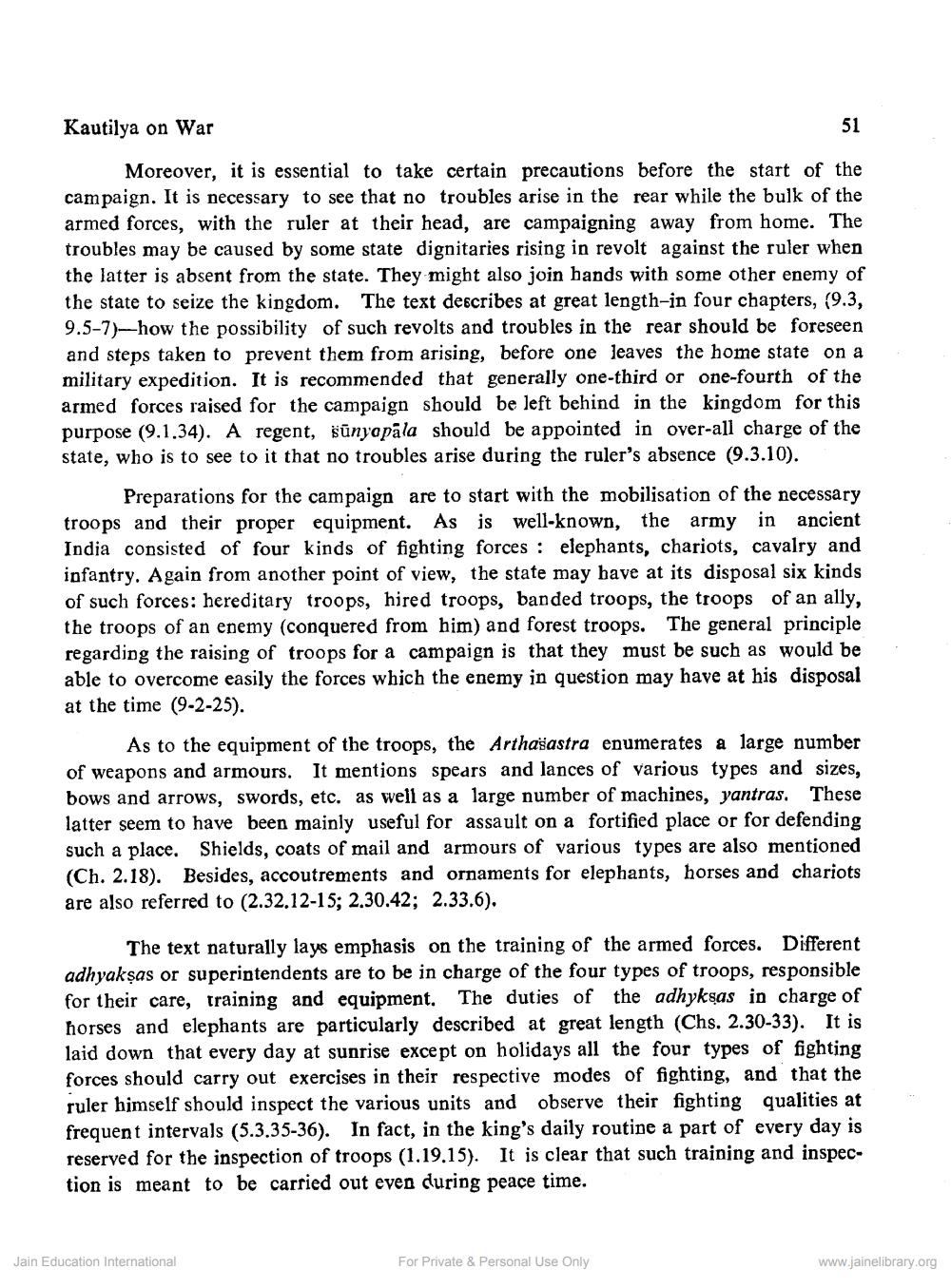________________
Kautilya on War
51
Moreover, it is essential to take certain precautions before the start of the campaign. It is necessary to see that no troubles arise in the rear while the bulk of the armed forces, with the ruler at their head, are campaigning away from home. The troubles may be caused by some state dignitaries rising in revolt against the ruler when the latter is absent from the state. They might also join hands with some other enemy of the state to seize the kingdom. The text describes at great length-in four chapters, (9.3, 9.5-7)—how the possibility of such revolts and troubles in the rear should be foreseen and steps taken to prevent them from arising, before one leaves the home state on a military expedition. It is recommended that generally one-third or one-fourth of the armed forces raised for the campaign should be left behind in the kingdom for this purpose (9.1.34). A regent, šūnyapāla should be appointed in over-all charge of the state, who is to see to it that no troubles arise during the ruler's absence (9.3.10).
Preparations for the campaign are to start with the mobilisation of the necessary troops and their proper equipment. As is well-known, the army in ancient India consisted of four kinds of fighting forces : elephants, chariots, cavalry and infantry. Again from another point of view, the state may have at its disposal six kinds of such forces: hereditary troops, hired troops, banded troops, the troops of an ally, the troops of an enemy (conquered from him) and forest troops. The general principle regarding the raising of troops for a campaign is that they must be such as would be able to overcome easily the forces which the enemy in question may have at his disposal at the time (9-2-25).
As to the equipment of the troops, the Arthasastra enumerates a large number of weapons and armours. It mentions spears and lances of various types and sizes, bows and arrows, swords, etc. as well as a large number of machines, yantras. These latter seem to have been mainly useful for assault on a fortified place or for defending such a place. Shields, coats of mail and armours of various types are also mentioned (Ch. 2.18). Besides, accoutrements and ornaments for elephants, horses and chariots are also referred to (2.32.12-15; 2.30.42; 2.33.6).
The text naturally lays emphasis on the training of the armed forces. Different adhyaksas or superintendents are to be in charge of the four types of troops, responsible for their care, training and equipment. The duties of the adhyksas in charge of horses and elephants are particularly described at great length (Chs. 2.30-33). It is laid down that every day at sunrise except on holidays all the four types of fighting forces should carry out exercises in their respective modes of fighting, and that the ruler himself should inspect the various units and observe their fighting qualities at frequent intervals (5.3.35-36). In fact, in the king's daily routine a part of every day is reserved for the inspection of troops (1.19.15). It is clear that such training and inspection is meant to be carried out even during peace time.
Jain Education International
For Private & Personal Use Only
www.jainelibrary.org




